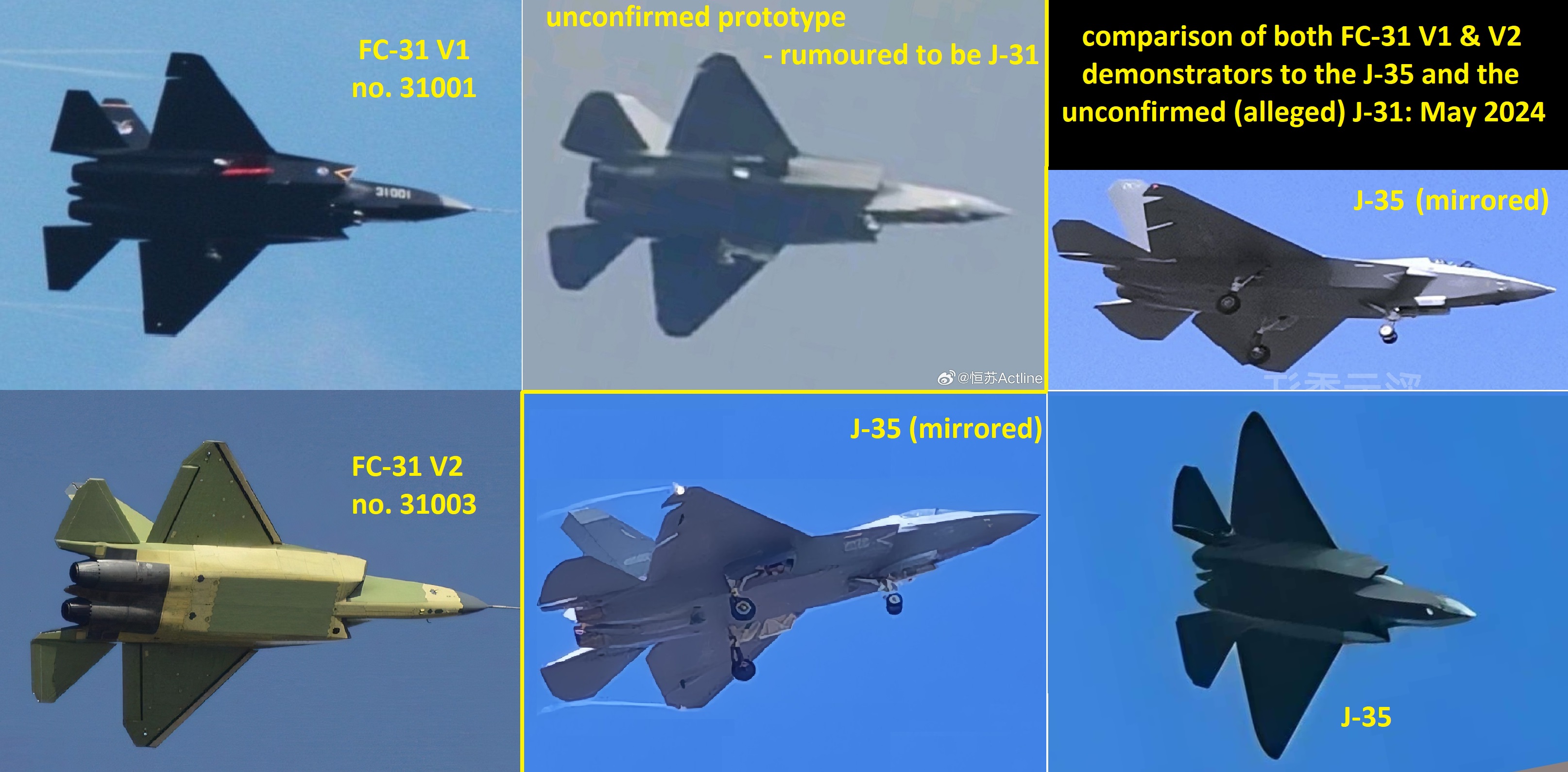China is reportedly progressing on a land-based version of its FC-31/J-35 stealth fighter, originally designed for naval operations. Recent images reveal significant design differences from the carrier-based J-35, suggesting an expansion of the program to include ground-based applications.
Shared by Chinese aviation researcher @Rupprecht_A on May 29, the photos have drawn considerable attention. The new variant signifies a return to the program’s initial land-based focus before it shifted towards carrier operations.
The manufacturer, Shenyang Aircraft Corporation, appears to be working on both land-based and carrier-based versions. The J-31 prototype, distinct from the J-35, has a smaller wing surface area, different landing gear configuration, and lacks a catapult launch bar.
Speculation surrounds the motivation for this development, with analysts suggesting reasons ranging from domestic military needs to foreign export opportunities. In January 2024, Pakistan expressed interest in acquiring FC-31 jets, potentially driving further refinement of the design.
Despite the renewed focus on the land-based variant, the FC-31/J-35 continues to be significant for China’s aircraft carrier program. The J-35, with its enhanced features for naval operations, is expected to be deployed on future CATOBAR carriers, while also potentially serving on existing carriers.
This development could attract interest from countries outside the US sphere of influence, thanks to the aircraft’s cost-effectiveness, stealth capabilities, and ability to boost military power.




:quality(70)/cloudfront-us-east-1.images.arcpublishing.com/archetype/BSY75DRAH5DJLCY3KONYNZU44I.jpg)
:quality(70)/cloudfront-us-east-1.images.arcpublishing.com/archetype/VM5EPLTK5JBU5B6CD7SLLW6AWQ.jpg)
:quality(70)/cloudfront-us-east-1.images.arcpublishing.com/archetype/VL6XK33ABJC4JF3EWVQACCMN6M.jpg)